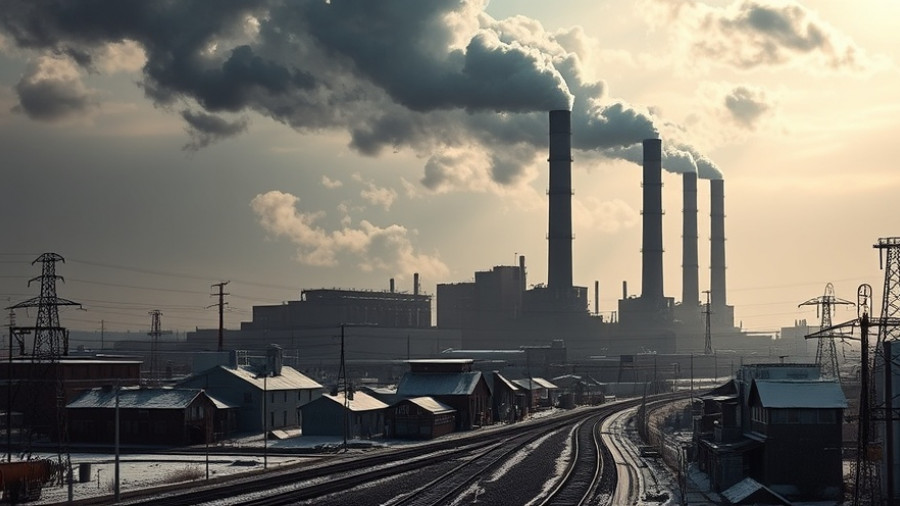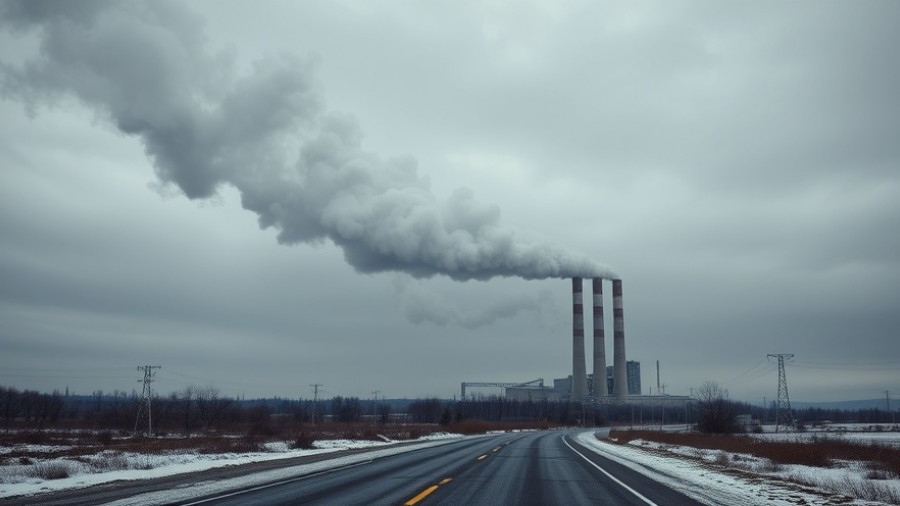
The Alarming Rise of CO2 Levels: A Call to Action
Recent reports indicate that the concentration of carbon dioxide (CO₂) in our atmosphere reached a staggering average of 423.9 parts per million (ppm) in 2024, marking the highest levels recorded since systematic measurements began in 1957. This unprecedented rise of 3.5 ppm within a single year not only underscores the accelerating pace of climate change but also signals an urgent need for action. The implications of this increase extend beyond environmental degradation; they threaten the very fabric of our economies and communities.
A Vicious Climate Cycle: The Role of Feedback Mechanisms
As noted by the World Meteorological Organization (WMO), we are now caught in a 'vicious climate circle.' The warmer our planet gets, the less capable it becomes of absorbing CO₂. With drier land and higher ocean temperatures, natural carbon sinks like forests and oceans are losing their effectiveness. In 2024, factors such as widespread droughts and wildfires, particularly in regions like the Amazon and Southern Africa, exacerbated this issue, resulting in an increase in CO₂ emissions alongside a decreased capacity for absorption. The critical question we face is: how do we break this cycle and restore the planet's natural ability to manage carbon emissions?
Understanding the Gas Mix: Beyond Just CO2
While CO₂ is the primary culprit behind climate change, we must also address the rise of other greenhouse gases such as methane (CH₄) and nitrous oxide (N₂O). In 2024, methane levels reached a concerning 1942 parts per billion (ppb), significantly driven by human activities like livestock farming and fossil fuel extraction. Methane's warming impact is approximately 25% that of CO₂, making it imperative for us to tackle these other contributors to climate change as well. Likewise, nitrous oxide concentrations increased to 338 ppb, underscoring the role of agricultural practices in our climate crisis.
The Urgent Need for Accurate Monitoring
WMO's call for enhanced monitoring capabilities could not be more critical. Reliable data and comprehensive atmospheric observations are essential tools for understanding the complexities of climate change and enabling effective policymaking. As we gear up for COP30 in Belém, Brazil, where countries will discuss strategies for strengthening climate policies, it is vital that nations invest in improving their measurement systems. Without a clear grasp of our current situation, our global community may falter in its efforts to address the raging climate emergency.
Conclusion: Act Now for Our Planet's Future
The alarming rise in greenhouse gases reinforces the need for immediate action. The WMO's observations serve as a clarion call to individuals, communities, and governments alike: We must reduce emissions, better monitor our environmental impact, and act swiftly. The clock is ticking, and the stakes are higher than ever.
To stay informed about climate change and learn how you can contribute to positive change, consider subscribing to our newsletters or supporting our cause through membership or donations. Every action counts in this battle for our planet's future.
 Rij toevoegen
Rij toevoegen






Write A Comment